© 2025 MJH Life Sciences™ , Patient Care Online – Primary Care News and Clinical Resources. All rights reserved.
Anticonvulsants as Analgesics: 11 Questions on Benefits vs Risks
Sample: Between 2012 and 2016, the number of prescriptions for gabapentin in the US increased by approximately how much?
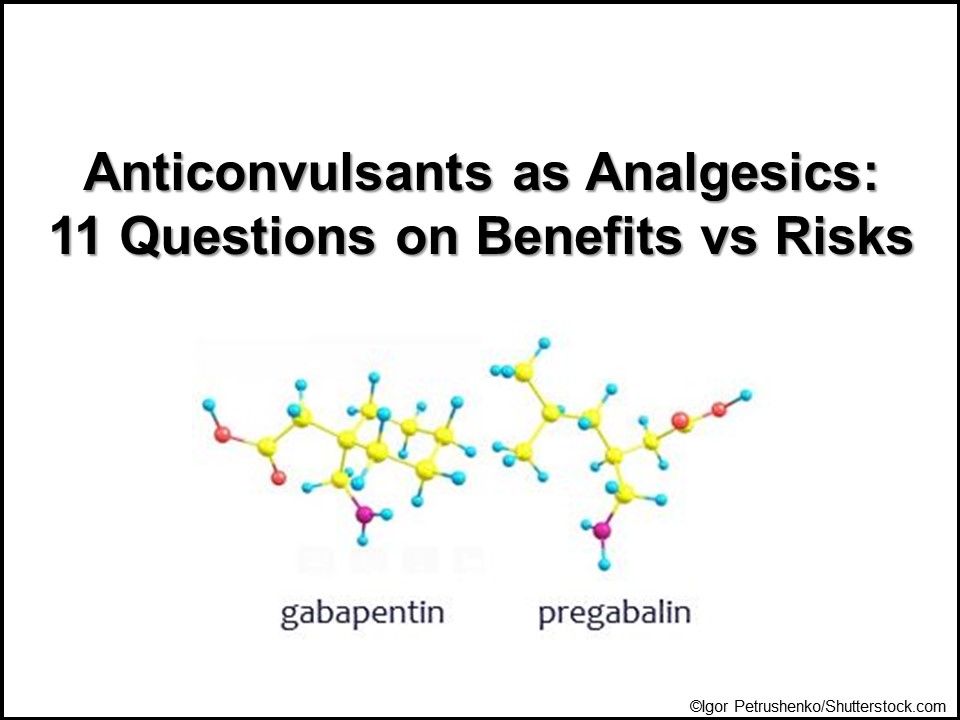
With guidelines on the management of chronic pain recommending a reduction in the use of opioids, physicians are increasingly turning to other medication classes to provide relief to their patients. Among these are the anticonvulsants gabapentin (Neurontin) and pregabalin (Lyrica). Recent studies have delineated chronic pain conditions for which they may and may not be effective and as well as their potential for abuse.
Click through the 11 questions above to find out what you know about the features, benefits, and risks of using anticonvulsants for pain.
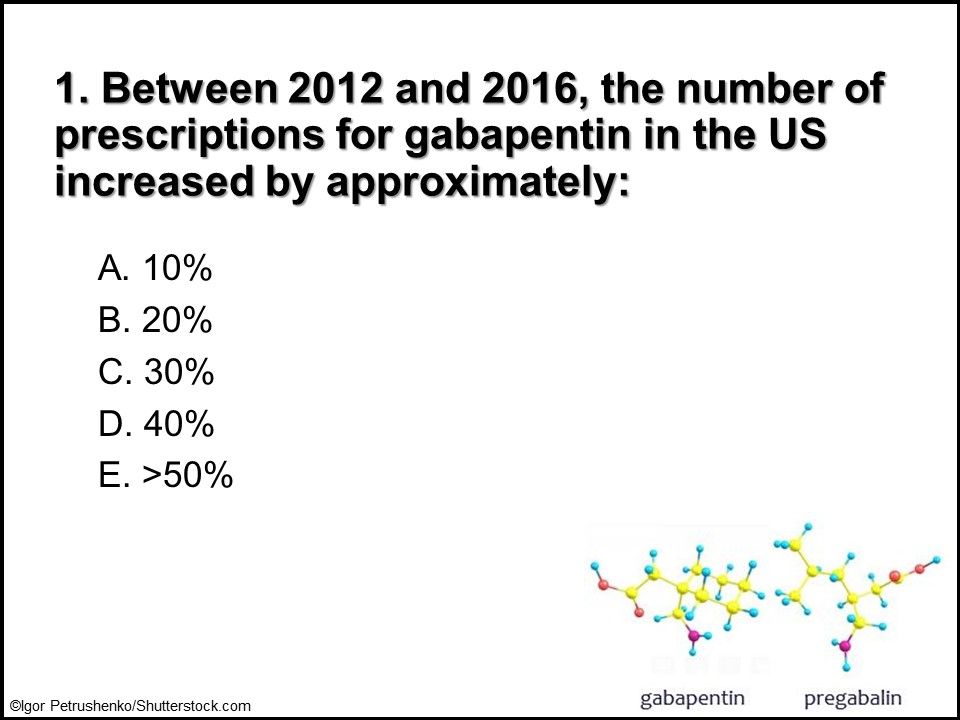
Question 1. Between 2012 and 2016, the number of prescriptions for gabapentin in the US increased by approximately how much?
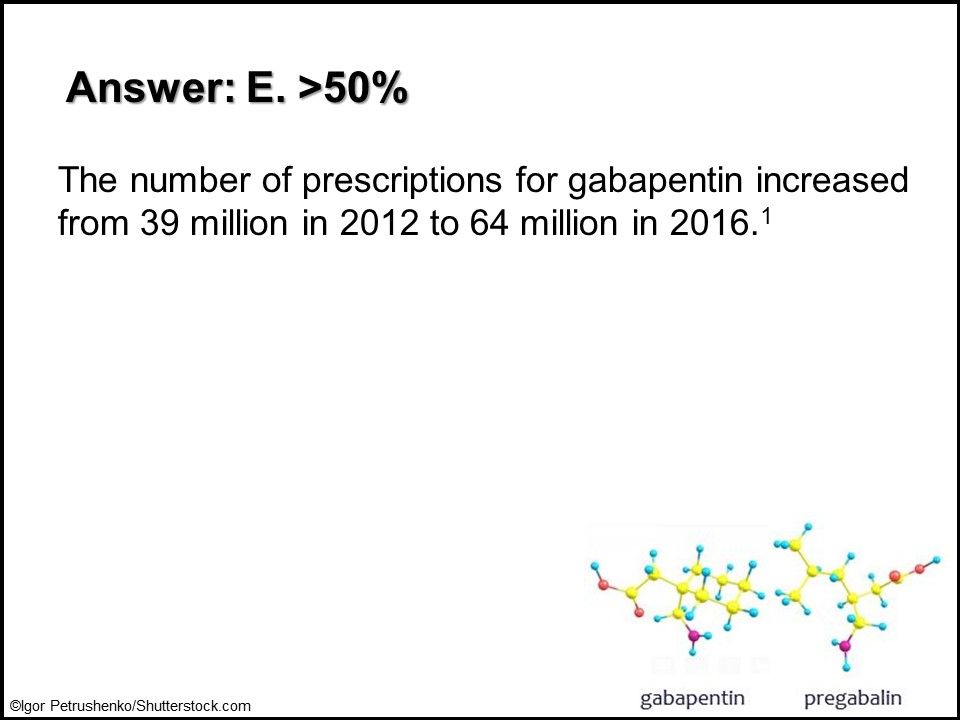
Answer: E. >50%. The number of gabapentin prescriptions increased from 39 million in 2012 to 64 million in 2016.1
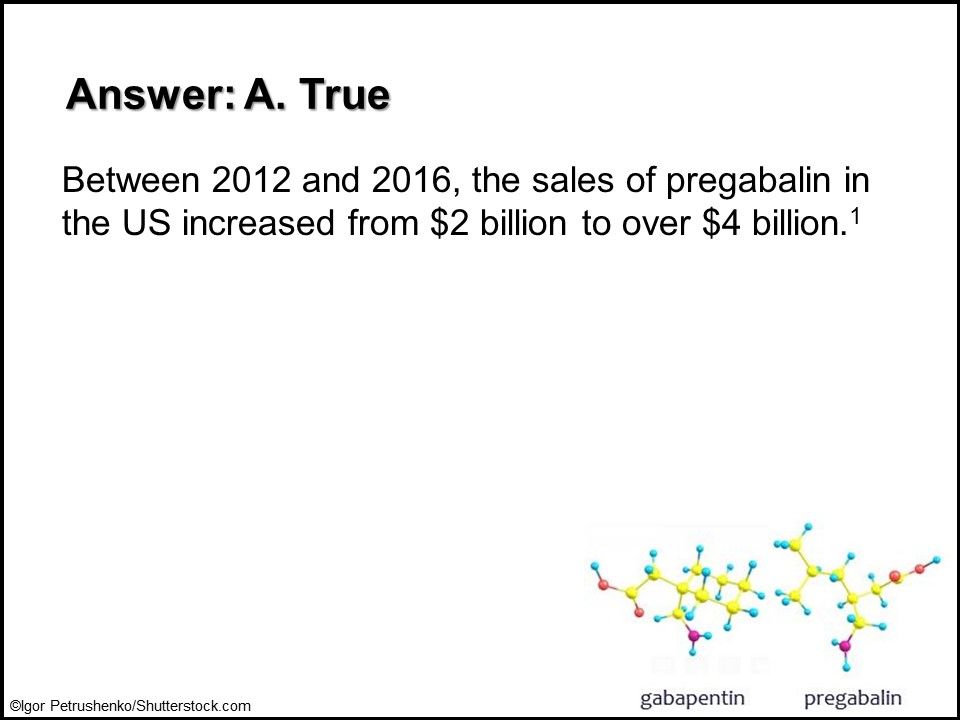
Answer: A. True. Between 2012 and 2016, the sales of pregabalin in the US increased from $2 billion to over $4 billion.1

Answer: B. Postherpetic neuralgia. This is the only pain condition for which gabapentin is FDA-approved.

Answer: E. All of the above. Pregabalin is FDA-approved for the management fibromyalgia, postherpetic neuralgia, diabetic neuropathic pain, and neuropathic pain secondary to spinal cord injuries.
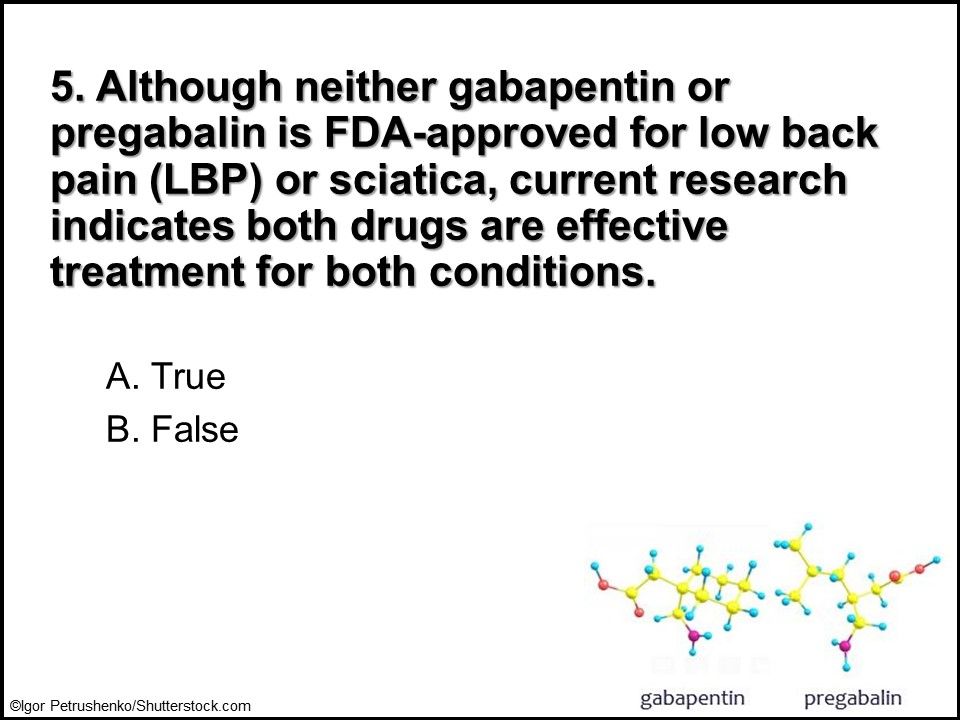
Question 5. True or false? Although neither gabapentin or pregabalin is FDA-approved for LBP or sciatica, current research indicates both drugs are effective treatment for both conditions.

Answer: B. False. Studies on anticonvulsants, including gabapentin and pregabalin, for LBP and sciatica have failed to show efficacy for either type of pain.2,3
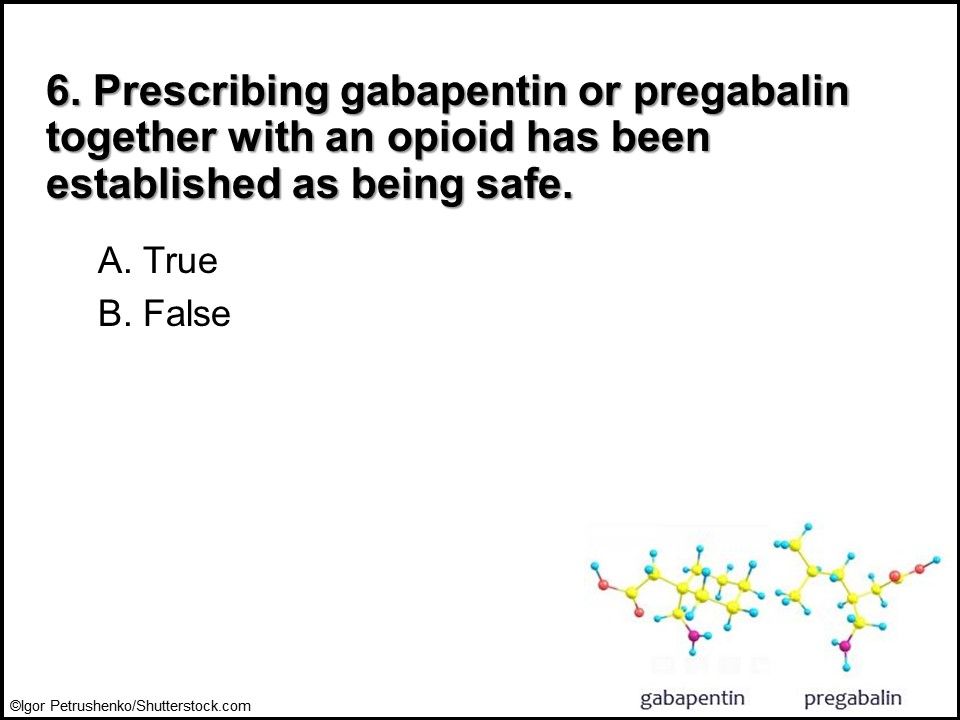
Question 6. True or false? Prescribing gabapentin or pregabalin together with an opioid has been established as being safe.
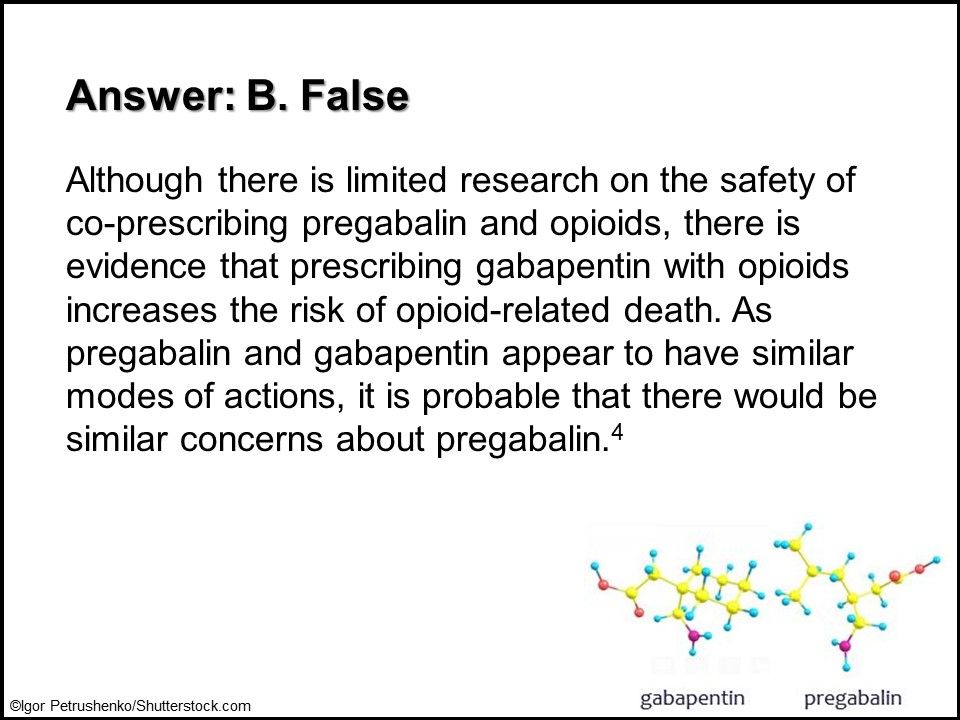
Answer: B. False. Although there is limited research on the safety of co-prescribing pregabalin and opioids, there is evidence that prescribing gabapentin with opioids increases the risk of opioid-related death. As pregabalin and gabapentin appear to have similar modes of action, it is probable that there would be similar concerns about pregabalin.4
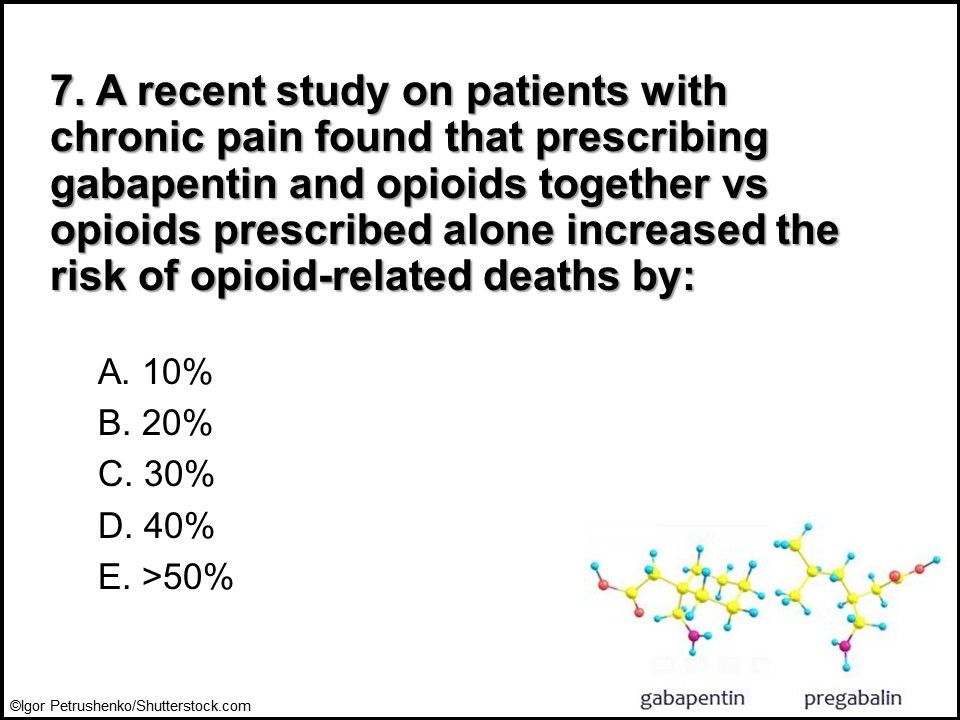
Question 7. A recent study on patients with chronic pain found that prescribing gabapentin and opioids together vs opioids alone increased the risk of opioid-related deaths by how much?

Answer: E. >50%. The study found that in patients with chronic pain, the use of gabapentin and an opioid together increased the risk of opioid related deaths by 60% vs patients just taking an opioid.4
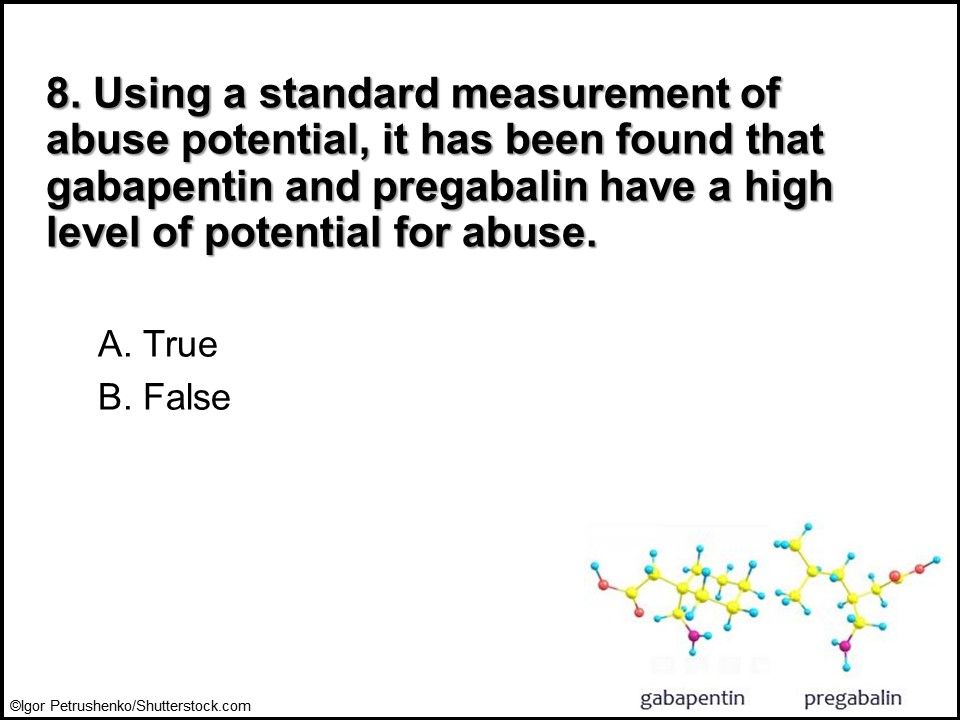
Question 8. True or false? Using a standard measurement of abuse potential, it has been found that gabapentin and pregabalin have a high level for potential abuse.
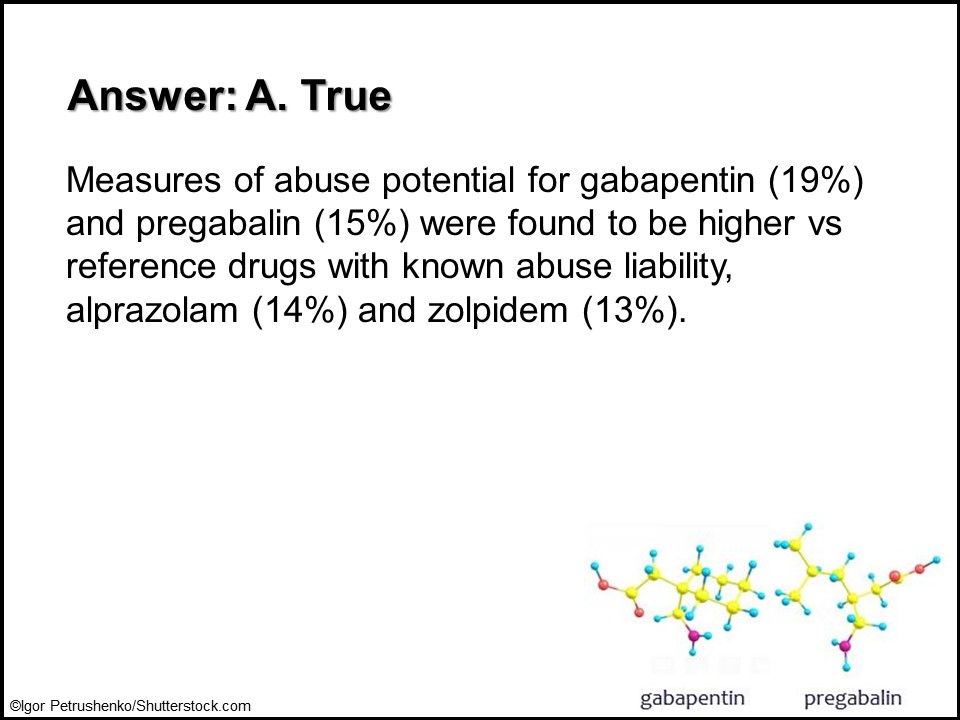
Answer: A. True. Measures of abuse potential for gabapentin (19%) and pregabalin (15%) were found to be higher vs alprazolam (14%) and zolpidem (13%); both gabapentin and pregabalin met the standard threshold value of 15% that indicates high potential for abuse.6
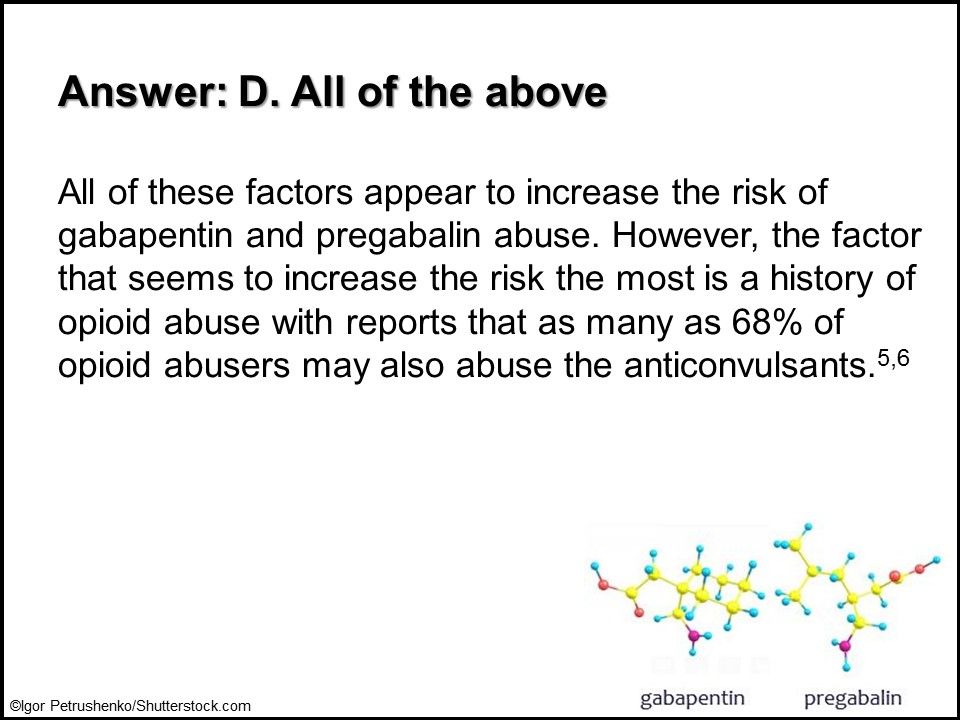
Answer: D. All of the above. All of these factors appear to increase the risk of gabapentin and pregabalin abuse. However, the factor that seems to increase the risk the most is a history of opioid abuse with reports that as many as 68% of opioid abusers may also abuse the anticonvulsants.5,6
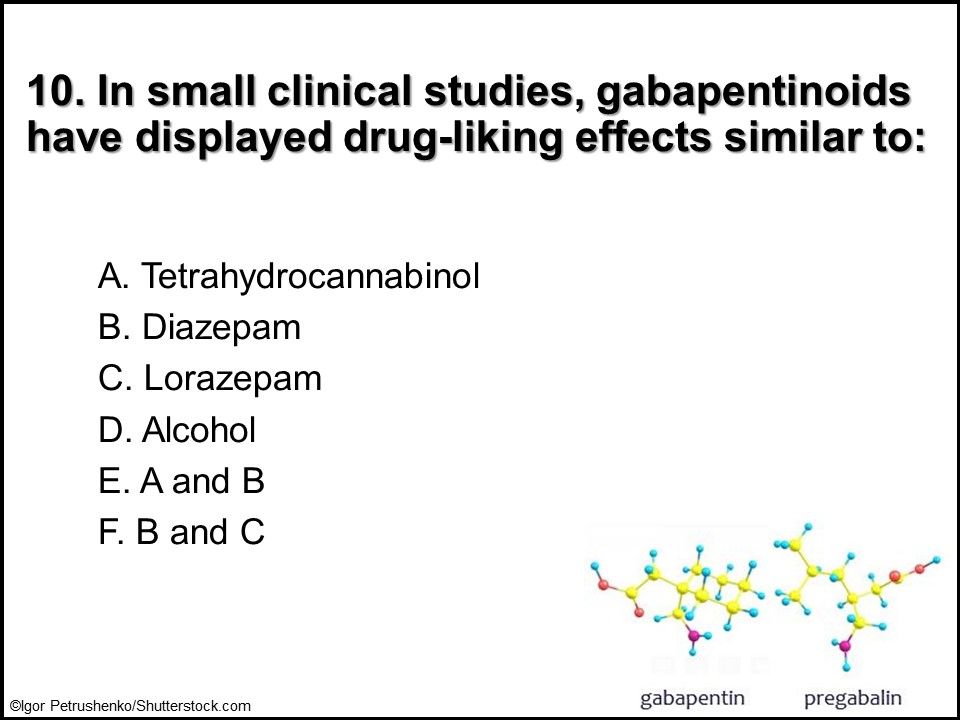
Question 10. In small clinical studies, gabapentinoids have displayed drug-liking effects similar to which of the above?
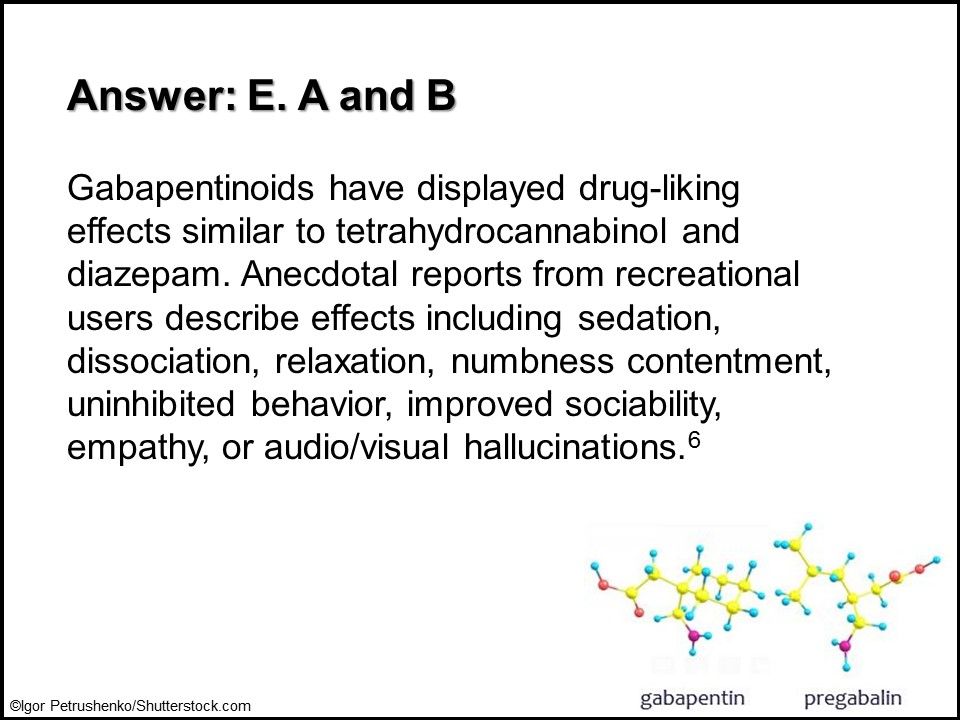
Answer: E. A and B. Gabapentinoids have displayed drug-liking effects similar to tetrahydrocannabinol and diazepam. Anecdotal reports from recreational users describe effects including sedation, dissociation, relaxation, numbness contentment, uninhibited behavior, improved sociability, empathy, or audio/visual hallucinations.6

Answer: E. All of the above.1,5,6
References:
1. Goodman CW, Brett AS. Gabapentin and pregabalin for pain – is increased prescribing a cause for concern. N Engl J Med. 2017;377:411-414.
2. Enke O, New HA, New CH, et al. Anticonvulsants in the treatment of low back pain and lumbar radicular pain: a systematic review and met-analysis. CMAJ. 2018;190:E786-E793.
3. Mathieson S, Chiro M, Maher CG, et al. Trial of pregabalin for acute and chronic sciatica. N Engl J Med. 2017;376:1111-1120.
4. Gomes T, Juurlink DN, Antoniou T, et al. Gabapentin, opioids, and the risk of opioid-related death: a population-based nested control study. PLoS Med. 2017;14:e1002396.
5. Evoy KE, Morrison MD, Saklad SR. Abuse and misuse of pregabalin and gabapentin. Drugs. 2017:77:403-426.
6. Evoy KE, Covvey JR, Peckham AM, Ochs L, Hultgren KE. Reports of gabapentin and pregabalin abuse, misuse, dependence, or overdose: An analysis of the Food and Drug Administration Adverse Events Reporting System (FAERS). Res Social Adm Pharm. 2018.





